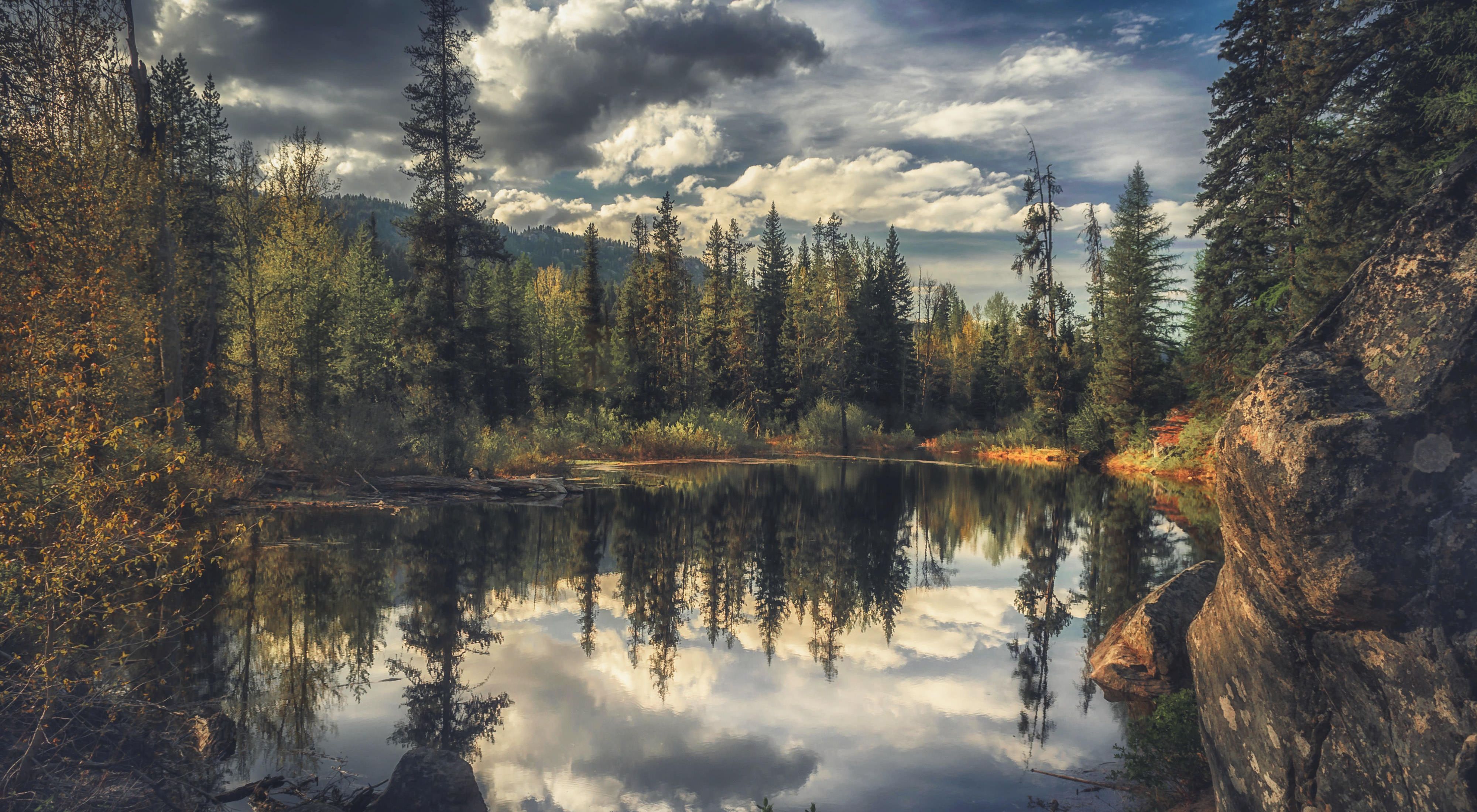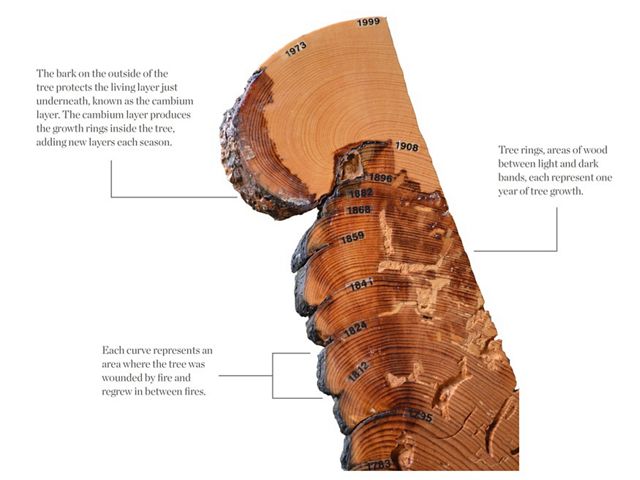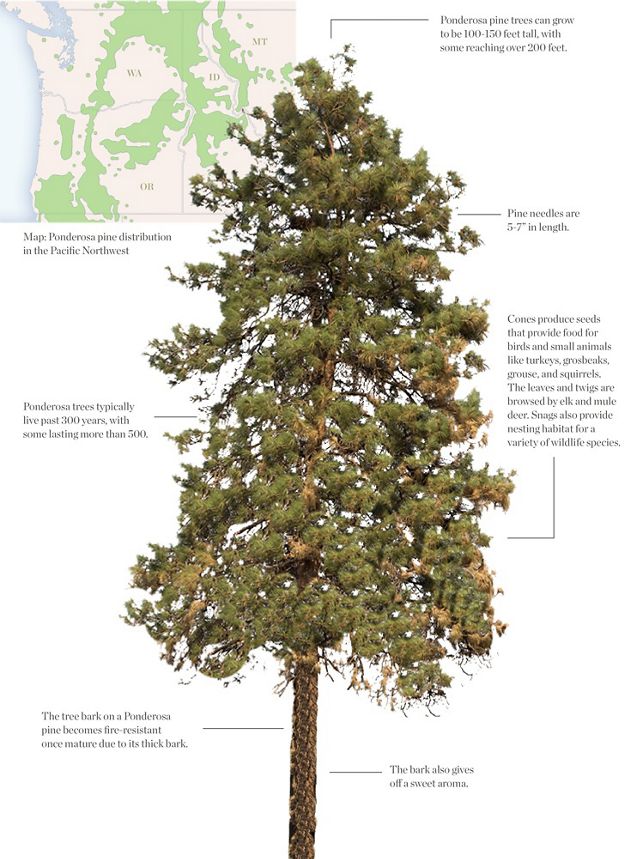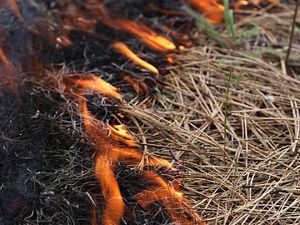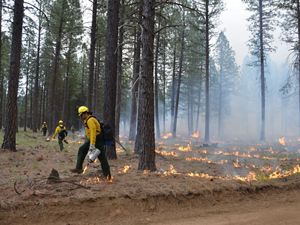What Trees Can Teach Us About Wildfire
Studying the rings of trees tells us that fire was a regular occurrence in Oregon's dry forests.
A study of tree rings by scientists at The Nature Conservancy found that the forests of Southern Oregon burned, on average, every 8 years prior to European settlement. These fires refreshed the landscape and provided habitat for wildlife and healthy soil for plants. The strongest trees survived these regular fire disturbances and grew into the massive old-growth trees that we love today.
The tree rings also show that with European settlement, came an extinguishing of these regular fires due to a dramatic reduction of controlled burning by Native Americans and a new policy of wildfire suppression. This loss of fire has caused a gradual decline in forest health, setting our forests up for high risk of mega-fires.
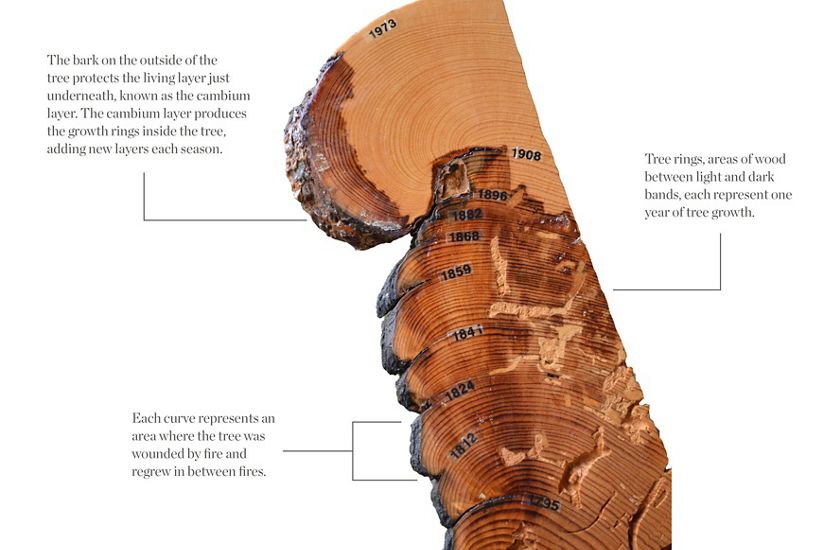
Quote: Kerry Metlen, Ph.D.
The loss of frequent fires in Southern Oregon's forests has caused a buildup of overgrowth that acts as fuel and primes the pump for mega-fires.
Fire-Resilient Ponderosa Pines
Oregon's dry forests adapted with fire. Strong and healthy ponderosa pine trees, the dominant tree species in these forests, are resilient to fires of low-to-moderate severity. Without fire of this type, overgrowth collects on the forest floor and acts as fuel which creates severe fires that even the strongest, most fire-resilient ponderosa pines cannot survive.

Key Takeaways of the Study
- Oregon's dry forests historically recorded fire more than once every decade.
- Frequent fire was disrupted by 1905, decades sooner where Euro-Americans had settled.
- The proportion of fall and early summer fires was higher historically than now.
- The fire history of the Rogue River Basin forests paralleled that of California.
Join Our Email List
Stay informed. Together, we can restore our forests and reduce the risk of severe fire.
Join us
Together, we can reduce the risk of severe wildfire and bring our forests back into balance.
